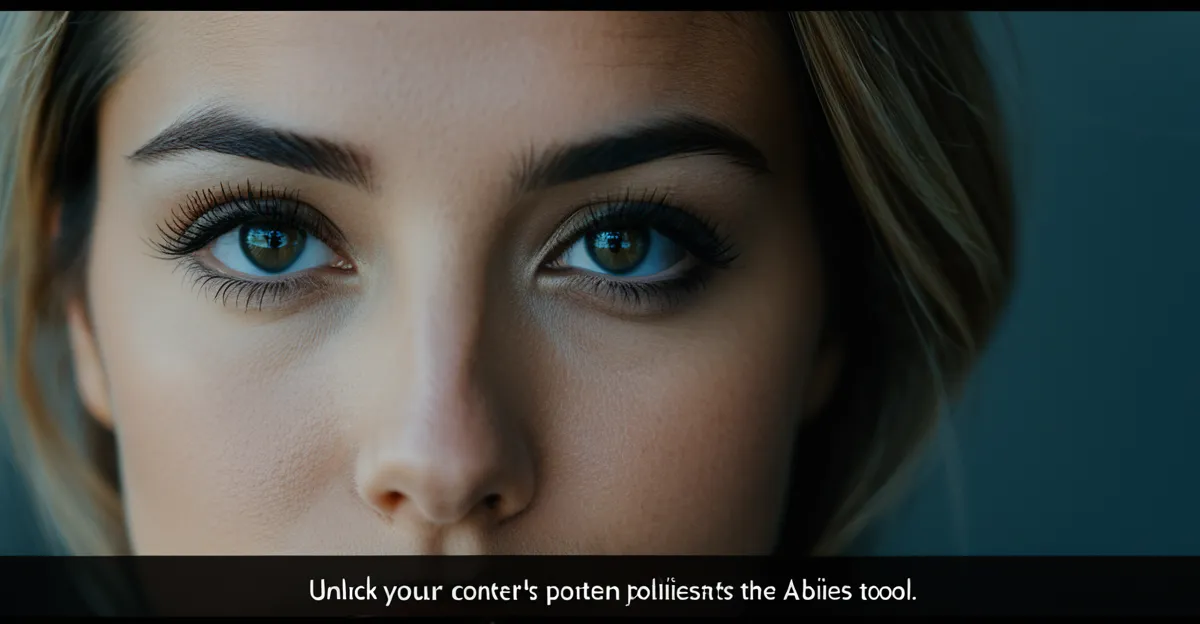Maximise your video’s reach and accessibility by choosing the best AI subtitles tool tailored to your needs. With advanced speech recognition, these tools offer near-perfect transcription, multi-language support, and seamless integration into editing workflows. Understanding their features, pricing, and ease of use helps you select the perfect fit—whether for social media clips, podcasts, or professional videos.
Essential Criteria for Choosing the Best AI Subtitles Tool
Learning how to navigate through the best ai subtitles tool online means focusing first on what truly matters: accuracy, flexibility, and accessibility. The most reliable AI subtitle generators harness advanced speech-to-text technology to deliver near-human transcription precision, even with varying accents or noisy backgrounds. Multilingual subtitle support is vital for global outreach—enabling content localization across 100+ languages. Flexible file export, such as SRT or VTT formats, ensures compatibility with editing platforms and social channels.
Also to discover : Magazine mockup: create stunning visuals effortlessly
Equally important are intuitive editing and customization features. Modern tools streamline subtitle syncing and let users personalize fonts, colors, and placement, supporting both branded content and social media optimization. Real-time previews make refining captions straightforward, reducing frustration, while batch processing accelerates workflows for larger projects.
Pricing structures vary considerably, with free tiers typically capped by export limits or watermarking. For high-volume creators or teams, paid plans unlock extended hours, HD quality, and advanced branding options—often integrating seamlessly with video editing suites. Evaluating these tools against your workflow needs helps ensure that enhancing video accessibility, SEO relevance, and engagement remains cost-effective, inclusive, and easy to manage in 2025.
Also to see : What Emerging Trends Are Shaping the Future of Marketing in the UK Computing Sector?
How AI Subtitle Generators Work and Their Impact on Video Content
AI subtitle generation begins with users uploading video files to platforms equipped with advanced video transcription tools. These platforms leverage powerful speech recognition models to achieve remarkable speech-to-text accuracy. The initial transcription occurs almost instantly, producing time-coded text that forms the basis for real-time subtitle creation.
Once subtitles are generated, most AI subtitle generation platforms provide robust editing and customization options. Users can fine-tune text, correct misinterpretations, adjust timing, and personalize styles—fonts, colors, and positioning—ensuring subtitles align with branding or accessibility guidelines. Rapid video transcription turnaround time further streamlines the editing process, minimizing delays from upload to export.
The technology behind these tools is rooted in deep AI model training for subtitles. Models are trained on millions of hours of multilingual audio, enhancing the speech-to-text accuracy even for accented speech or industry-specific jargon. Modern platforms also support various subtitle file formats, and as a result, facilitate easy integration with diverse video platforms.
Widespread adoption of AI subtitle generation elevates video accessibility and compliance. Viewers with hearing impairments benefit from accurate, readable captions, while robust video transcription tools and real-time workflows make videos discoverable by search engines, extending audience reach in 2025 and ensuring inclusivity.
Comprehensive Feature Comparison of Leading AI Subtitle Tools in 2025
Side-by-Side Assessment: VEED, Headliner, Descript, Kapwing, SubtitleBee, Flixier, Media.io, Vidyo.AI
When comparing AI subtitle tools, consider their AI subtitle tools comparison criteria: speech-to-text accuracy, user-friendly subtitle editors, and support for different video formats. VEED and Kapwing deliver intuitive editing environments with strong AI subtitle generation and automatic captioning software. Descript introduces speaker identification accuracy and bulk video transcription tools. Many solutions enable subtitle export options in formats like SRT and VTT, addressing varied workflow requirements.
Flixier stands out for cloud-based subtitle services with rapid AI transcription speed, whereas SubtitleBee and Media.io emphasize multilingual subtitle support and subtitle file formats compatibility. Vidyo.AI caters to real-time subtitle creation, especially for social content editing.
Key Differences in Supported Languages, Accuracy, and Workflow Integration
Supported language range and speech-to-text accuracy differ notably. VEED and SubtitleBee support over 100 languages, enhancing video accessibility and global reach. Editing and customization options are prominent across the board, with user-friendly subtitle editors allowing direct adjustment of subtitle formatting styles and batch processing for subtitles. Integration with video platforms—such as social networks and conferencing tools—streamlines video marketing with captions and boosts enhancing video accessibility.
Free vs Paid Usage Limits, Watermarking, and Export Quality
Trial and free versions typically impose video transcription tools’ limits—such as watermarked exports, limited AI transcription speed, or subtitle embedding vs separate files. Paid options enhance export quality, increase subtitle export options, and provide advanced customization. Users benefit from AI subtitle tool pricing models tailored for various subtitle volume and feature needs.
Customization, Branding, and Accessibility Features in Modern AI Subtitle Platforms
Editing and customization options have become a defining feature of current video transcription tools. Leading AI subtitle generation platforms now enable users to select from multiple subtitle formatting styles, such as on-screen placement, responsive background colors, and adaptable sizes. These platforms often provide customizable subtitle fonts to align with unique brand identities, ensuring that captions and subtitles seamlessly match an organization’s desired aesthetic.
User interface design considerations play a significant role in streamlining real-time subtitle creation, giving content owners a smoother experience. Real-time editing and preview options let teams rapidly review automated translation in subtitles, implement automated error correction, and adjust time-stamping features—all within collaborative workflows. This synergy helps reduce manual editing time, particularly in batch processing for subtitles or in caption customization by language.
On the accessibility front, accessibility compliance standards and captioning accessibility for deaf audiences are priorities. These platforms follow modern subtitle accessibility laws, making AI subtitles key for enhancing content inclusivity. Automated translation in subtitles and comprehensive speaker identification accuracy ensure videos are understood by multilingual and diverse audiences, fulfilling broad requirements for enhancing video accessibility and strengthening viewer engagement.
User Experiences, Performance, and Limitations Highlighted by Real Reviews
Common strengths: ease of use, accuracy, engagement boosts
User reviews and ratings consistently highlight that AI subtitle generation offers notable gains in efficiency and reach. Automatic captioning software transforms lengthy manual transcriptions into near-instant results, drastically reducing manual editing time and making content accessible to a wider audience. Video transcription tools now provide real-time subtitle creation with robust subtitle accuracy metrics, which often approach near-human levels. Many celebrate the intuitive interfaces of user-friendly subtitle editors that simplify editing and customization options, promoting substantial improvement in viewer engagement and content accessibility—even across language barriers thanks to multilingual subtitle support.
Reported drawbacks: pricing variances, watermarks, feature overload
Despite these benefits, several users point to speech recognition limitations. Even advanced software can struggle with diverse accents or background noise, occasionally affecting accuracy and requiring automated error correction or further manual intervention. Reviews also mention watermarks and video quality restrictions on free plans, as well as overwhelming feature sets that can extend the learning curve of tools, especially for those only needing basic AI subtitle generation or simple video transcription tools.
Recommendations based on user needs: basic, professional, or enterprise use
For basic projects, trial and free versions offer cost-effective captioning solutions, though users may need to compromise on watermark or export restrictions. Professionals benefit from advanced customization options, batch processing, and enhanced subtitle quality assessment, while enterprise users prioritize fast AI transcription speed, integration with video platforms, and dedicated customer support services to streamline complex workflows. Selecting the right tool hinges on aligning expected subtitle quality improvement tips, usability, and support with project demands.
Practical Guidance to Maximize Value from AI Subtitle Tools
AI subtitle generation allows creators to improve accessibility and maximize video impact, especially for platforms like YouTube, podcasts, and social media. To select the best cost-effective captioning solutions, assess whether your needs involve batch processing for subtitles or multilingual subtitle support. Cloud-based subtitle services often excel in real-time subtitle creation and provide robust editing and customization options, ensuring subtitle file formats compatibility across projects.
For video marketing with captions, subtitles for social media videos and captions for live streaming enhance viewer engagement and retention. These features also support SEO optimization—improving SEO with subtitles by making key phrases indexable and discoverable. Integrating accurate speech recognition technology and subtitle export options aligns with compliance standards while amplifying reach through automated translation in subtitles.
AI workflow automation and batch processing for subtitles can streamline routine tasks, reducing manual editing time and supporting scalable video content localization. Tools such as PlayPlay provide fast AI transcription speed and voice differentiation in captions, benefiting both subtitles for educational videos and accessibility compliance standards. Regular platform updates ensure integration with video platforms and user-friendly subtitle editors that address speaker identification accuracy and adaptive subtitle display—helping you meet the unique needs of every audience.




